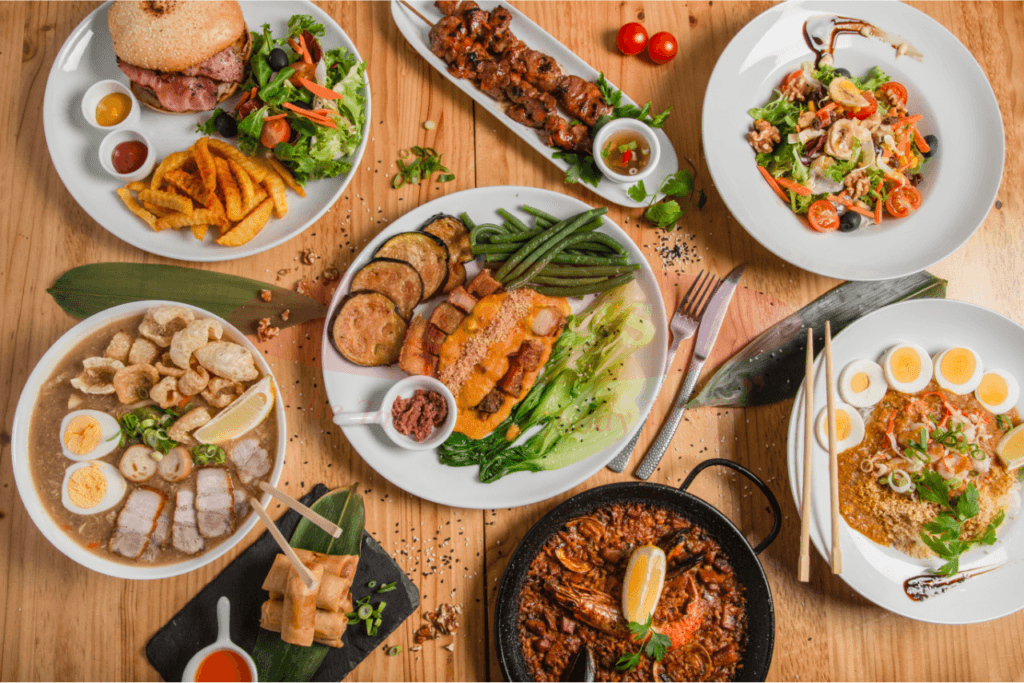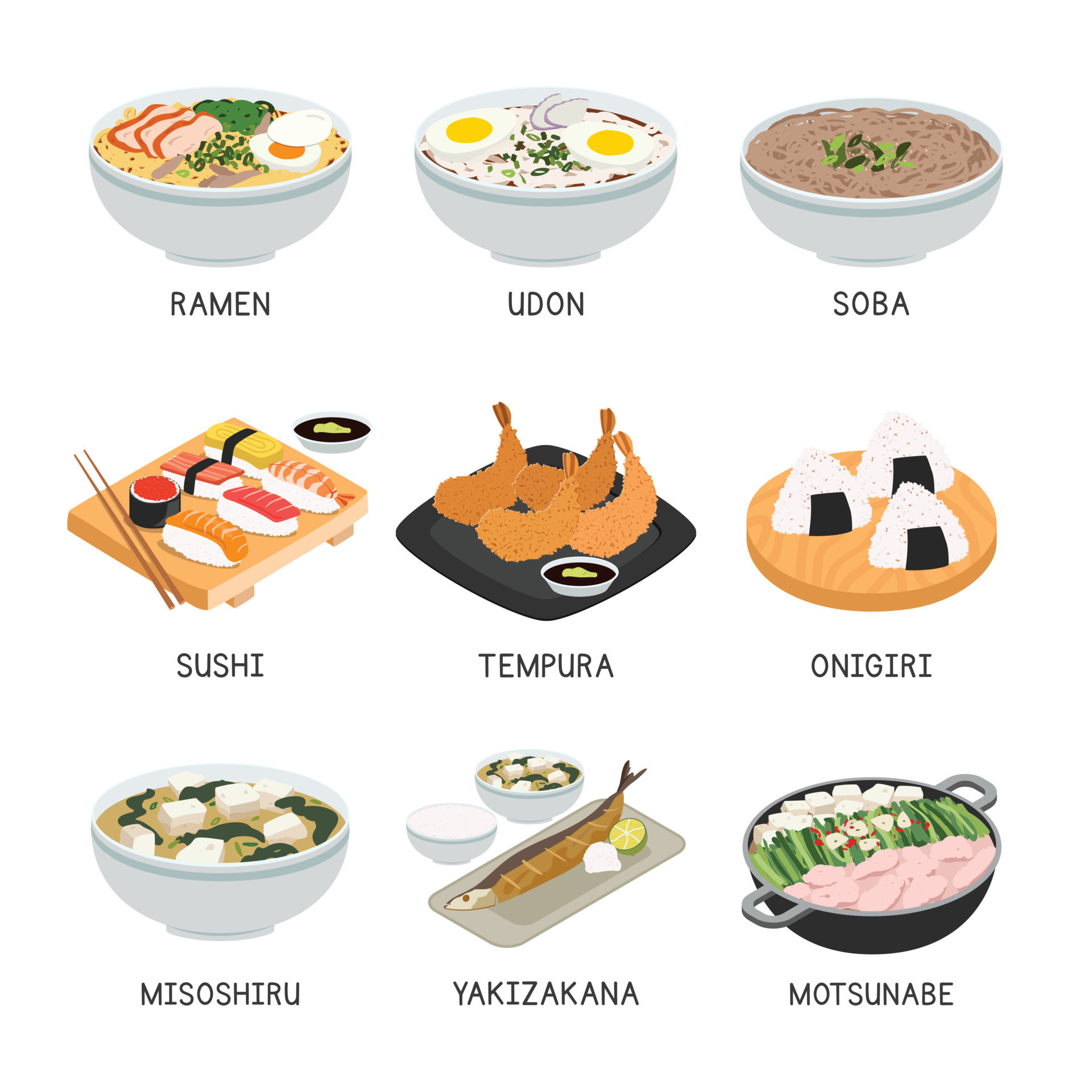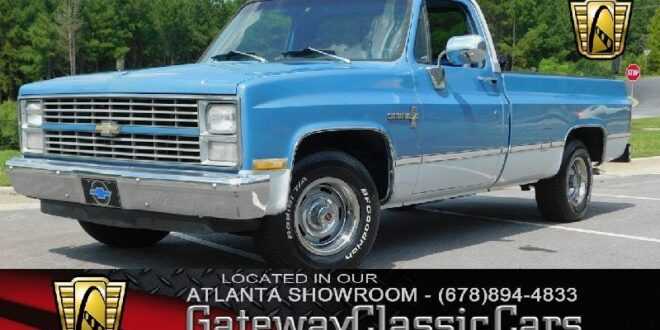Food Truck Blueprint: Your Comprehensive Guide to Mobile Culinary Success
Food Truck Blueprint: Your Comprehensive Guide to Mobile Culinary Success cars.truckstrend.com
In the vibrant, ever-evolving landscape of the food industry, the food truck stands as a beacon of culinary innovation, entrepreneurial spirit, and direct customer engagement. But behind every successful food truck – from the gourmet taco slingers to the artisanal coffee brewers – lies a meticulously crafted Food Truck Blueprint. This isn’t just a sketch of a kitchen layout; it’s a holistic, detailed strategic plan encompassing every facet of conceiving, launching, and operating a thriving mobile food business. It’s the architectural drawing for your dream, the navigation chart for your journey, and the bedrock upon which your entire enterprise will be built. Without a comprehensive blueprint, aspiring food truck owners risk navigating a complex market blindly, leading to costly mistakes, operational inefficiencies, and potential failure. Understanding and diligently developing your Food Truck Blueprint is not merely an option; it is the single most critical step towards transforming a culinary dream into a profitable reality.
Food Truck Blueprint: Your Comprehensive Guide to Mobile Culinary Success
The Conceptual Foundation: Crafting Your Vision
The journey of any successful food truck begins long before a single piece of equipment is purchased. It starts with a clear, compelling vision and a deep understanding of your market. This initial phase of the Food Truck Blueprint focuses on defining your identity and carving out your unique space.
Concept Development & Niche Identification
What culinary experience do you want to offer? Are you specializing in gourmet burgers, authentic street tacos, artisanal desserts, or healthy vegan bowls? Your concept should be unique, appealing to a specific demographic, and feasible for a mobile operation. Conduct thorough market research: Who is your target audience? What are their preferences? Who are your competitors, and what gaps can you fill? A strong niche reduces direct competition and helps you stand out.
Menu Engineering for Mobility
Your menu must be efficient, appealing, and practical for a small, mobile kitchen. Prioritize dishes that can be prepped off-site, cooked quickly, require minimal equipment, and travel well. Consider ingredients that are versatile and minimize waste. Costing each menu item precisely is crucial for profitability. Think about signature dishes that will become your calling card.
Branding & Identity: Your Truck’s Personality
Your brand is more than just a logo; it’s the entire persona of your food truck. Develop a compelling name, a memorable logo, and a vibrant design for your truck wrap that reflects your concept and attracts attention. Consistency in branding across your truck, menu, social media, and staff uniforms builds recognition and trust. This visual identity is often the first impression customers have, making it paramount to your blueprint.

The Regulatory & Legal Framework: Navigating the Red Tape
One of the most complex yet critical sections of your Food Truck Blueprint involves understanding and complying with the myriad of legal and regulatory requirements. Skipping or rushing this step can lead to significant fines, operational shutdowns, and even the demise of your business.
Business Registration & Licenses
Before you can even think about cooking, you’ll need to legally establish your business. This includes registering your business name, obtaining an Employer Identification Number (EIN) from the IRS, and securing a general business license from your state and local authorities. The specific requirements vary significantly by location.

Health & Safety Regulations
This is arguably the most stringent area. Every health department has specific codes for mobile food units. Your blueprint must account for:
- Permits: Mobile food unit permits, food handler certifications for all staff.
- Kitchen Requirements: Specific standards for sinks (handwashing, prep, warewashing), water tanks (fresh and grey water capacity), wastewater disposal, ventilation, refrigeration, and proper waste management.
- HACCP Plan: A Hazard Analysis and Critical Control Points plan outlining how you will prevent foodborne illnesses.
- Commissary Kitchen Agreement: Many jurisdictions require food trucks to operate out of a licensed commercial commissary kitchen for food preparation, storage, and waste disposal.

Zoning & Parking Permits
Operating a food truck isn’t as simple as parking anywhere. You’ll need to research local zoning laws, parking restrictions, and specific permits for operating on public streets, private property, or at events. Some cities have designated food truck zones or require special permits for each location.
Insurance
Protect your investment and mitigate risks with comprehensive insurance. This typically includes:
- General Liability Insurance: Covers customer injuries or property damage.
- Commercial Auto Insurance: Specific coverage for your food truck as a commercial vehicle.
- Workers’ Compensation: If you plan to hire employees.
- Property Insurance: For your equipment and inventory.
The Physical Blueprint: Designing Your Mobile Kitchen
This section of your Food Truck Blueprint focuses on the tangible, physical aspects of your mobile restaurant. The design of your truck is paramount to efficiency, safety, and operational success.
Truck Selection & Acquisition
Choose the right vehicle for your concept. Options include step vans (common for custom builds), trailers (often more space for less cost, but require a towing vehicle), or even smaller carts for specialized items. Consider new vs. used – a used truck can save upfront costs but may require more maintenance. Factor in the vehicle’s condition, mileage, and potential for customization.
Layout & Workflow Optimization
This is where the "blueprint" truly comes alive. A well-designed layout maximizes a small space, ensures smooth workflow, and complies with health codes. Plan for:
- Prep Area: Adequate counter space for chopping, assembling.
- Cooking Line: Strategic placement of grills, fryers, ovens, ensuring proper ventilation.
- Service Window: Efficient order taking and delivery.
- Washing Stations: Dedicated sinks for handwashing, food prep, and dishwashing.
- Storage: Secure and accessible storage for ingredients, supplies, and disposables.
- Safety Clearances: Ensuring enough space around hot equipment.
Equipment Selection
Invest in NSF-certified (or equivalent) commercial-grade equipment that fits your menu and space. Key equipment often includes:
- Cooking Equipment: Grills, griddles, fryers, ovens, stovetops.
- Refrigeration: Reach-in refrigerators, freezers, prep tables with cold wells.
- Ventilation System: Commercial hood with fire suppression (essential!).
- Water System: Fresh water tanks, grey water tanks, water pump, water heater.
- POS System: Mobile-friendly, reliable point-of-sale system.
Power & Utilities
How will your truck power its operations?
- Generator: Typically gasoline or diesel, sized to handle your equipment’s power demands. Noise levels and fuel efficiency are considerations.
- Propane: For cooking equipment (grills, fryers). Proper secure storage and lines are critical.
- Water: Ensure sufficient fresh water storage for your operation and grey water storage for waste. Plan for easy filling and disposal.
Safety Features
Beyond health codes, incorporate safety into your design:
- Fire Suppression System: Mandatory for most commercial cooking equipment.
- Fire Extinguishers: Clearly marked and accessible.
- First Aid Kit: Fully stocked.
- Emergency Exits: Clear pathways.
- Non-slip Flooring: Reduces risk of falls.
The Operational Blueprint: Running Your Business Day-to-Day
Once the truck is built and legal, your Food Truck Blueprint shifts to the day-to-day operations, ensuring smooth, profitable service.
Supply Chain & Inventory Management
Establish reliable relationships with food suppliers. Develop an efficient inventory system to track ingredients, minimize waste, and ensure you never run out of popular items. Implement FIFO (First-In, First-Out) for stock rotation.
Staffing & Training
Even if you start solo, consider future staffing needs. Define roles, responsibilities, and necessary skills. Train staff not only on food preparation and safety but also on customer service, POS operation, and problem-solving. A friendly, efficient crew is vital to a positive customer experience.
Point-of-Sale (POS) System
A mobile-friendly POS system is crucial for managing orders, processing payments (cash, card, mobile pay), tracking sales data, and potentially managing inventory. Choose one that offers robust reporting and ease of use.
Marketing & Sales Strategy
How will customers find you?
- Social Media: Instagram, Facebook, Twitter are essential for announcing locations, menu updates, and engaging with customers. High-quality food photography is key.
- Website/App: A simple website or dedicated app to list your schedule, menu, and catering options.
- Event Participation: Secure spots at local festivals, markets, and private events.
- Catering: A lucrative avenue for additional revenue.
- Loyalty Programs: Encourage repeat business.
Financial Planning & Management
Your blueprint must include a detailed financial plan:
- Startup Costs: Comprehensive budget for truck, build-out, permits, initial inventory.
- Operating Costs: Daily/weekly expenses (ingredients, fuel, labor, permits, commissary fees, maintenance).
- Pricing Strategy: Based on food cost, labor, overhead, and market demand.
- Break-Even Analysis: Understand how many items you need to sell to cover costs.
- Funding: How will you finance your venture (savings, loan, investors)?
Challenges & Solutions in Your Blueprint
Even with the most thorough blueprint, challenges will arise. A robust plan anticipates these and outlines solutions.
- Regulatory Hurdles: Solutions: Proactive research, hiring a consultant, building relationships with health inspectors.
- Competition: Solutions: Strong branding, unique menu, excellent customer service, dynamic location strategy.
- Operational Complexities: Solutions: Streamlined workflow, robust equipment maintenance schedule, well-trained staff.
- Truck Breakdowns: Solutions: Emergency fund, preventative maintenance, having a reliable mechanic on call.
- Weather Dependency: Solutions: Catering gigs, indoor events, robust online marketing to announce schedule changes.
- Location Scouting: Solutions: Data analysis (foot traffic, demographics), networking with event organizers, using food truck locator apps.
Food Truck Blueprint Estimated Costs (General Estimates)
The costs associated with a Food Truck Blueprint vary widely based on location, new vs. used equipment, and the complexity of your concept. This table provides general ranges for key components.
| Category | Description | Estimated Cost Range (USD) |
|---|---|---|
| I. Planning & Legal | ||
| Market Research & Consulting | Software, reports, professional advice | $500 – $5,000 |
| Business Registration & EIN | State filing fees, legal setup | $100 – $500 |
| Licenses & Permits | Business license, food truck permits, health permits (annual/initial) | $500 – $3,000+ (annual) |
| Insurance | Initial premiums (General Liability, Commercial Auto, Workers’ Comp) | $2,000 – $8,000+ (annual) |
| II. Truck & Build-Out | ||
| Truck/Trailer Acquisition | Used truck/trailer to new custom-built | $20,000 – $150,000+ |
| Custom Build-out/Renovation | Interior fabrication, plumbing, electrical, ventilation, wrap | $20,000 – $80,000+ |
| Commercial Kitchen Equipment | Cooking equipment, refrigeration, sinks, POS system, smallwares | $15,000 – $40,000+ |
| Fire Suppression System | Mandatory for safety | $2,000 – $5,000 |
| Generator | Sizing based on power needs | $1,500 – $10,000 |
| Propane Tanks & Installation | Secure storage and lines | $500 – $2,000 |
| III. Operational Start-up | ||
| Initial Inventory | Food, beverages, disposables, cleaning supplies | $1,000 – $5,000 |
| Commissary Kitchen Fees | Initial deposit & monthly fees (if required) | $500 – $2,000+ (monthly) |
| Marketing & Branding | Initial website, social media setup, menu design, professional photos | $500 – $5,000 |
| Uniforms & Smallwares | Staff uniforms, utensils, containers | $300 – $1,500 |
| IV. Contingency Fund | Unexpected expenses, repairs, initial operational buffer | 10% – 20% of total startup |
| TOTAL ESTIMATED STARTUP COST | $65,000 – $300,000+ |
Note: These are general estimates and can vary significantly based on location, quality of equipment, new vs. used, and individual business choices.
Frequently Asked Questions (FAQ)
Q1: What’s the main difference between a food truck and a food trailer?
A1: A food truck is a self-contained motorized vehicle that you drive to locations. A food trailer needs to be towed by another vehicle. Trailers often offer more interior space for the cost and can be detached, allowing the towing vehicle to be used for other purposes. However, trucks are generally more agile for frequent location changes.
Q2: How long does it typically take to get a food truck ready from concept to operation?
A2: This can vary widely, but typically ranges from 6 months to 1.5 years. This includes concept development, business registration, truck acquisition, custom build-out, permitting, and initial marketing. Regulatory approval and custom fabrication are often the longest parts of the process.
Q3: What’s the most common mistake new food truck owners make?
A3: The most common mistake is underestimating the complexity and costs involved, particularly with regulatory compliance and the custom build-out. Many owners also fail to conduct thorough market research or develop a realistic financial plan, leading to cash flow problems.
Q4: Do I need a commissary kitchen even if my truck is fully equipped?
A4: In most jurisdictions, yes. Even if your truck has cooking capabilities, health departments often require food trucks to have an agreement with a licensed commercial commissary kitchen for large-scale prep, bulk storage, wastewater disposal, and potentially cleaning. Check your local health department’s specific requirements.
Q5: How do food trucks find locations to operate?
A5: Food trucks find locations through various methods: securing permits for public streets/zones, participating in food truck rallies and festivals, booking private events (catering), partnering with breweries or businesses, and using food truck finder apps that connect them with locations. Networking and active social media presence are key.
Concluding Summary
The Food Truck Blueprint is far more than a simple checklist; it is the comprehensive strategic document that underpins every aspect of your mobile culinary venture. From the initial spark of a concept and the intricate dance with regulatory bodies, to the detailed design of your mobile kitchen and the operational strategies that drive daily success, each section of the blueprint is crucial. It minimizes risk, maximizes efficiency, and provides a clear roadmap for navigating the competitive food landscape. While the journey of launching a food truck is undeniably challenging, a meticulously developed and diligently followed Food Truck Blueprint transforms potential pitfalls into opportunities, ensuring that your passion for food translates into a sustainable, profitable, and truly mobile culinary success story. It is the definitive guide to building not just a truck, but a thriving business on wheels.





